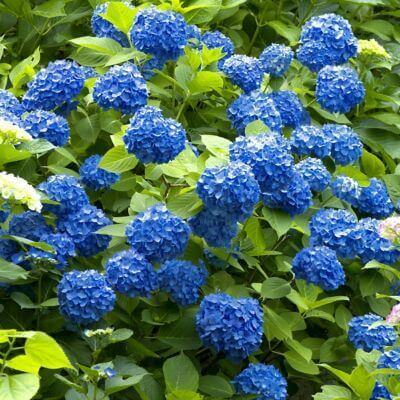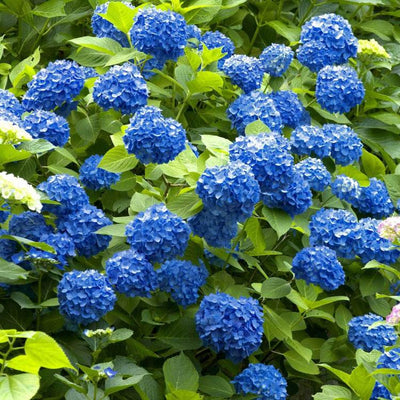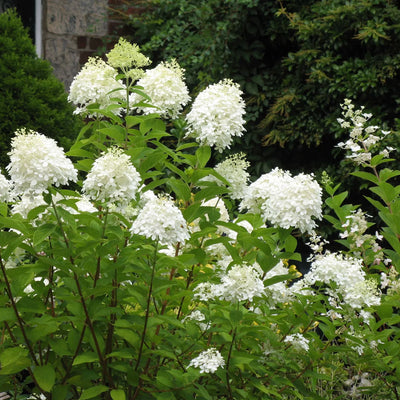Although their blooms have faded, hydrangeas require continuing winter care to ensure blooms during the next growing season. The care you give them now will determine the quality and quantity of blooms you’ll receive next summer.

Whether your hydrangeas are grown in-ground or in pots, it’s time to prepare them for the cold weather just around the corner. Winter care begins early, before the first fall frost, and continues until the last frost next spring, so don’t put off your hydrangea winter care preparations.
Cutting Back Hydrangeas for Winter
Preparing hydrangeas for winter is easy; however, pruning techniques vary between varieties. And sometimes, pruning isn’t even necessary. When pruning is desired, it may take place in late fall, winter, or early spring; however, there is an advantage to cutting them back in late fall because there are fewer plants to protect against the coming cold.
Unless pruning all stems to ground level, permanently remove dead and weak stems and spent flowers, leaving healthy buds intact.
Before and after the pruning of each shrub, clean the blades of your pruning shears with rubbing alcohol to prevent the spread of disease and pests from one plant to another.
Pruning Big Leaf Hydrangea (Hydrangea macrophylla)
- Big Leaf Hydrangea consists of both lace cap and mophead varieties. They may be cut back in the fall or early spring. Do not remove any stems that have not bloomed — these contain next year’s blooms.
- Pruning Oakleaf Hydrangea (Hydrangea quercifolia)
- Because the foliage of Oakleaf Hydrangea provides a welcome color display in the fall, winter pruning is often left for early spring. Retain stems that have not bloomed — they will be next year’s floral display, and never remove more than one-third of the plant.
Pruning Hardy Hydrangea (Hydrangea paniculata)
- Hardy hydrangeas bloom on new wood; therefore, they are generally cut back to the ground. If taller plants are desired, the shrub may be cut back to a height of one to three feet.
- Since hardy hydrangeas have an upright growth habit, they may be trained to grow as a tree.
Pruning Annabelle Hydrangea (Hydrangea arborescens)
- Hydrangea arborescens are also pruned to the ground since their blooms develop on new wood. Pruning may take place in late winter or early spring.
- Pruning Climbing Hydrangea (Hydrangea animal)
- Because they produce blooms on side shoots, climbing hydrangea does not require pruning. However, if you give them a trim, do so in the late fall when they have finished blooming. Cut shoots back to the last healthy bud.
Winter Protection for In-Ground Hydrangeas
Winter protection should be in place for in-ground hydrangeas before the first fall frost and will remain until the last spring frost. You’ll need to build a frame around the entire plant to protect your hydrangea plants. The frame is then wrapped with netting, burlap, chicken wire, or some other material to create a cage that allows airflow while retaining an insulative material such as leaves and pine needles.
When adding insulative materials, care should be taken not to damage the ends of the branches. Broken branches translate into fewer blooms during the upcoming season.
Winter Protection for Potted Hydrangeas
When protecting potted hydrangeas, you have a few choices. The easiest and best option is to bring the plant inside before the first frost. A greenhouse shed or other outbuilding protects your potted plants well. However, this is only an option if the plant and pot can move easily.
If the potted plant must remain outside, you’ll need to protect both the pot and the plant against the elements. A cage may be built around the potted plant just as those built around an in-ground plant. An insulative material is used to fill the cage to protect the plant.
A protective barrier may be created using rigid foam insulation panels as well.
Fleece jackets can be purchased and used to protect the pot and plant. Or, you may purchase fleece fabric and wrap it around the potted plant to protect it from the elements.
Why is Winter Care So Important?
Winter care is essential for hydrangeas because they begin to cultivate new bloom growth for next year during the warmer months before the first fall frost this year. If these tender new buds are not protected against wind and cold weather, they may be damaged before they can adorn your garden with beautiful flowers and lush bushes next summer.



